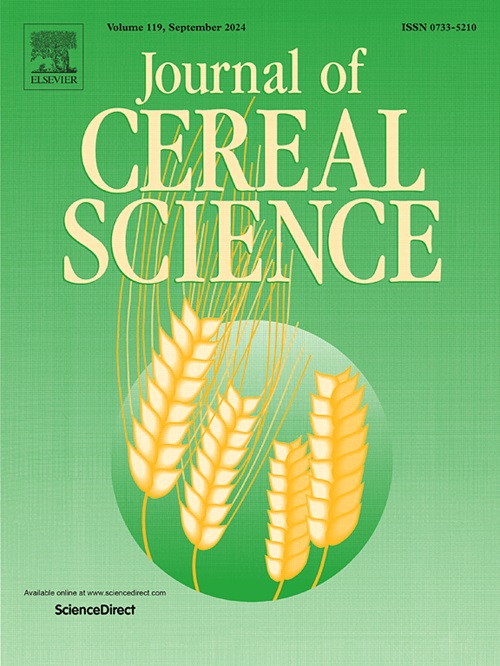IF 3.9
2区 农林科学
Q2 FOOD SCIENCE & TECHNOLOGY
引用次数: 0
摘要
施氮量对稻米的食用品质(EQ)有很大影响。然而,优等米(SG)和劣等米(IG)食味品质差异的淀粉分子结构机理及其对施氮量的响应有待进一步研究。本研究测定了四种施氮量(N1:0、N2:195、N3:270 和 N4:345 kg ha-1)下 SG 和 IG 的淀粉分子结构(SMS)、淀粉理化性质(SPP)和 EQ。我们发现,施氮过量(ENA,N4)的 SMS 相关指标比 N1 低 8.45%-32.59%。ENA使EQ降低了11.2%-30.3%。ENA对SMS和SPP都有很大影响。ENA的fa和(fa + fb1)/(fb2 + fb3)明显高于N1。ENA使A链和B链的比例降低了11.2-47.2%,使C链的比例提高了46.8-80.6%。相关分析表明,直链淀粉链长分布与水稻 EQ 密切相关。IG 的 SMS 和 SPP 对 ENA 更为敏感。IG 中相对较高的 C 链和 fb1 含量导致了较差的 EQ。总之,IG 的淀粉理化性质和分子结构更容易受到ENA 的影响,从而导致 EQ 较差。本文章由计算机程序翻译,如有差异,请以英文原文为准。

Excessive nitrogen application reduces eating quality by changing the starch molecular structure and physicochemical properties of inferior grains
The nitrogen application rate strongly influences the eating quality (EQ) of rice. However, the starch molecular structure mechanism underlying the differences in taste quality between superior (SG) and inferior grains (IG) and their response to nitrogen application rates must be further studied. In this study, the starch molecular structure (SMS), starch physicochemical properties (SPP) and EQ of SG and IG were determined under four nitrogen application rates (N1:0, N2:195, N3:270 and N4:345 kg ha−1). We found that the SMS-related indicators of excessive nitrogen application (ENA, N4) were 8.45%–32.59% lower than those of N1. ENA decreased the EQ by 11.2%–30.3%. ENA has a strong influence on both the SMS and SPP. The fa and (fa + fb1)/(fb2 + fb3) of ENA were significantly greater than those of N1. ENA decreased the percentage of A and B chains by 11.2–47.2% and increased the percentage of C chains by 46.8–80.6%. Correlation analysis revealed that the amylose chain length distribution was closely related to the rice EQ. The SMS and SPP of IG were more sensitive to the ENA. The relatively high contents of C chains and fb1 in IG contribute to poor EQ. In summary, the starch physicochemical properties and molecular structure of IG are more susceptible to the effects of ENA, resulting in poor EQ.
求助全文
通过发布文献求助,成功后即可免费获取论文全文。
去求助
来源期刊

Journal of Cereal Science
工程技术-食品科技
CiteScore
7.80
自引率
2.60%
发文量
163
审稿时长
38 days
期刊介绍:
The Journal of Cereal Science was established in 1983 to provide an International forum for the publication of original research papers of high standing covering all aspects of cereal science related to the functional and nutritional quality of cereal grains (true cereals - members of the Poaceae family and starchy pseudocereals - members of the Amaranthaceae, Chenopodiaceae and Polygonaceae families) and their products, in relation to the cereals used. The journal also publishes concise and critical review articles appraising the status and future directions of specific areas of cereal science and short communications that present news of important advances in research. The journal aims at topicality and at providing comprehensive coverage of progress in the field.
 求助内容:
求助内容: 应助结果提醒方式:
应助结果提醒方式:


